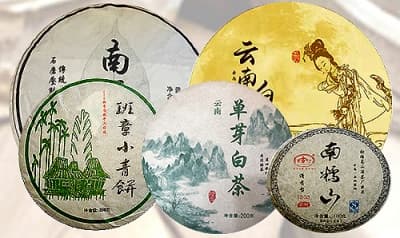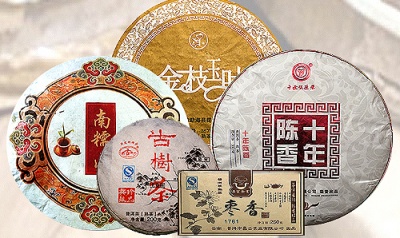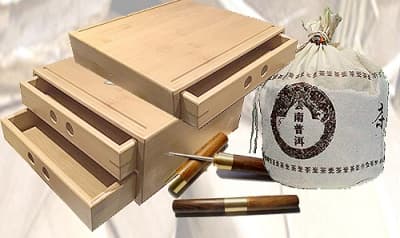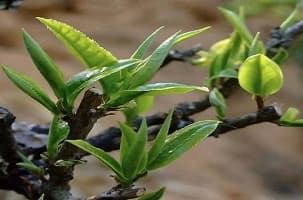Choose your Pu erh Tea and accessories here
-
Raw (Sheng) Pu erh

Raw Pu erh is from the Xishuangbanna region in China, a green, non-fermented tea, which ages and matures naturally.
view more →
-
Ripe (Shu) Pu erh

Ripe Pu erh is fermented tea produced in the Yunnan region of China from a large leaf variety of the Camellia Sinsensis plant.
view more →
-
Pu erh Accessories

To help you enjoy a perfectly brewed cup of Pu erh tea we have selected a range of accessories.
view more →
Our suggestions
Abbey Tea has selected one of the most famous ripe Pu erh tea from the Nan Nuo Shan. Picked from wild arbour trees at altitudes of between 1300-1400m, where the climate and rich organic soil produces a tea of exceptional quality. There are many foggy days, which makes Nan Nuo tea a fine example of the saying “High, foggy mountains produce famous tea.”
Using only the best leaves from the old trees, the leaves are hand picked, air dried, pan fried, fermented, steamed and then pressed. Great skill has been taken in crafting this top quality Pu erh tea cake. The leaves are pressed at the Menghai Ruigong Tea Factory.
The resulting tea is mellow with a soft, fruity, sweet taste and deep, rich aroma. This is a most highly prized sought after, difficult to purchase very pure Pu erh.
What is Pu erh Tea?
Pu erh teas are growing in popularity as they become more well known for their health qualities and sophisticated, fresh flavours.
Pu erh tea is originally rich in substances, the main components are: tea polyphenols, amino acids, sugars, alkaloids, vitamins, tea pigments, aromatic substances, saponins, etc., which form the rich and changeable taste of Pu erh tea.
There are two types of Pu erh tea, ripe (shu) and raw (sheng).
Ripe (Shu) Pu erh
Ripe Pu erh is a type of fermented dark tea produced in the Yunnan region of China from a large leaf variety of the Camellia Sinsensis plant. It is processed in a unique way in that the leaves undergo fermentation and oxidation after they are dried and rolled. This process is a Chinese speciality and produces a tea dark and rich in colour known as Hei Cha, with a deep ripe aroma and a smooth, soft, sweet to earthy taste.
Raw (Sheng) Pu erh
Raw Pu erh is a non-fermented tea, which does not go through the fermentation process. The whole large leaves are harvested, then dried naturally in the sun and stored, to produce a tea that is fresh and sweet tasting.
Raw Pu erh was developed and introduced in the Ming dynasty, 700 - 800 years ago and has a very long history. Traded on the Ancient Tea route it was so highly valued by the Chinese that it was often smuggled into towns by Basket Carriers in their pockets. Ripe Pu erh has a much shorter history. It was developed between 1973 and 1974 at the Kunming Tea Factory.
For centuries it was considered to be a medicinal tea and today, Pu erh is well known for its health benefits including the ability to raise the level of good cholesterol and lower the level of bad cholesterol, to help to digest fatty foods and increase the metabolism and assist with weight loss. It is used for treating irritable bowel syndrome and insomnia. Antioxidants found in Pu erh tea may help fight cancer and its anti-inflammatory properties may help alleviate the symptoms of arthritis, asthma and arteriosclerosis. It provides fluoride for teeth to fight cavities and helps prevent bad breath. It is no wonder that the Chinese have been drinking Pu erh tea for thousands of years!
As with good wine, Pu erh tea gets better with age. Finely made and stored and left to mature, Pu erh teas will improve in character and taste and increase in value.
Try a top quality Pu erh tea from Abbey Tea. The tea should be steeped for 12 to 30 seconds for the first few infusions. Prolonged steepings can produce, dark and bitter brews.












